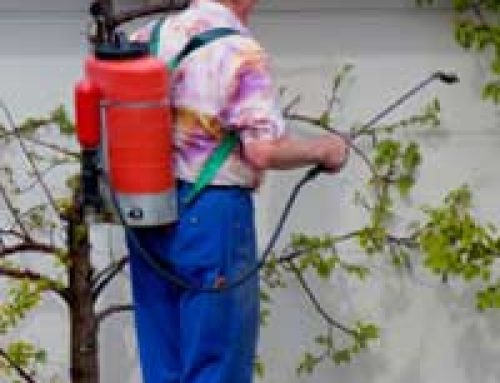 We would all tend to think of a beautiful garden as a safe haven in which to relax and soak up the peaceful bliss, but there are many things contained within a garden environment that can be poisonous if we are not careful.
We would all tend to think of a beautiful garden as a safe haven in which to relax and soak up the peaceful bliss, but there are many things contained within a garden environment that can be poisonous if we are not careful.
These could include garden chemicals such as weed killers, pesticides, paint stripper, methylated spirits, petrol, insect repellents and any other similar items you might keep in your garden shed. In the garden itself, there could be poisons in the earth or compost and, perhaps, you might have planted certain things which can be highly poisonous. Plus, specific insects such as bees can also leave harmful poison in our bloodstream so it’s important to know what to do if you suspect somebody has been poisoned or if you think you, yourself, might have been.
Symptoms
The symptoms you might be presented with in the case of possible poisoning will vary depending upon the substance and the amount of poison concerned. Some poisons will hamper the blood’s ability to carry oxygen around the body whilst others will burn and irritate the digestive system. Symptoms of poisoning can include nausea, vomiting, fever, shivering, abdominal pain, weakness, drowsiness, headache, irritability, swallowing difficulty, salivation, skin rash, burns around the mouth and nose, fits and seizures, skin rashes, blurred vision and coma to name but some.
Call the Emergency Services
Time is of the essence in making sure that the effects from possible poisoning are reduced, so even if you’re not sure what exactly is wrong with the person, if you suspect poisoning, don’t hesitate to call 999 to seek immediate medical assistance. If you know for sure what’s happened, explain that to the medical emergency operator on the phone and they might get you to carry out certain action before the ambulance arrives. However, only carry out this advice if you are specifically asked to do so.
You may be instructed how to remove a bee sting and, in some cases if the poison has been ingested accidentally through the mouth, you may be asked to induce vomiting. However, you shouldn’t induce vomiting as a matter of course as it can be highly dangerous to do that so just listen closely to what the medical health professional advises you to do, if necessary, and follow that to the letter.
Whilst waiting for the ambulance to arrive, put the victim in the recovery position and, if they’ve been vomiting, wipe any vomit away from their mouth and ensure that their head is pointing downwards as this will prevent them from swallowing and, perhaps, choking on their own vomit should they need to be sick again. You shouldn’t, however, give them anything to eat or drink.
Information
Once the emergency services have arrived at the scene, you should try to give them as much information as possible. Let them know if the person has vomited or not and if so, collect a sample of their vomit as this can help to establish what might have poisoned them so that they can administer the correct treatment. You might also be asked the person’s age, approximate weight, whether or not they have any existing medical conditions which you might be aware of and any medication they are currently taking. If you know for sure what has poisoned them, tell the ambulance crew and give them the container the substance was in or the plant they’ve ingested if that’s the cause.
Diagnosis and Treatment
People who are suspected of having been poisoned will usually be taken to hospital and examined. They’ll have blood tests to establish the cause and an electrocardiogram to make sure that their heart is functioning properly before administering them with treatment once the cause has been identified.
To minimise the risk of poisoning occurring when out in the garden, you should do the following:
- Keep all fuels, chemicals and pesticides secured in a locked shed or cabinet in their original containers or clearly marked with what’s contained inside and make sure children are forbidden to go near these substances
- Learn how to identify all poisonous plants and, if you’re in doubt about a particular plant, make sure you find out what it is first before introducing it into your garden
- With bee stings in particular, make sure you remove the stinger straight away ensuring that you cut off the visible sac containing the poison first (refer to the article on bee stings)





Leave A Comment